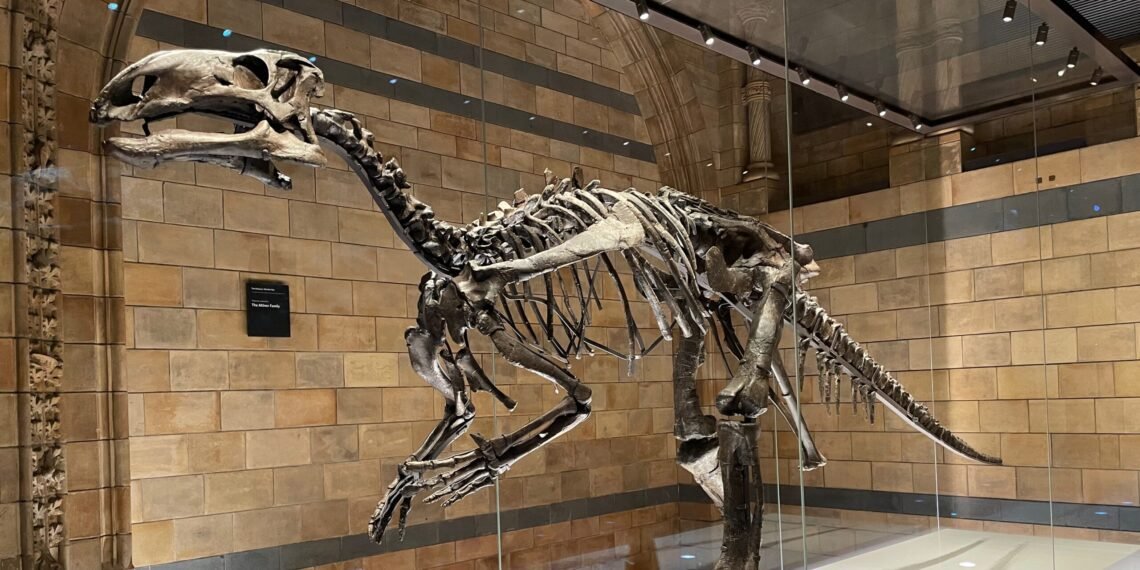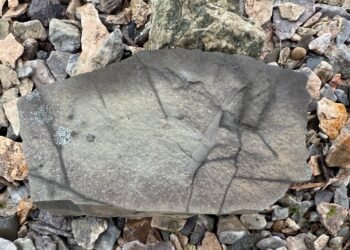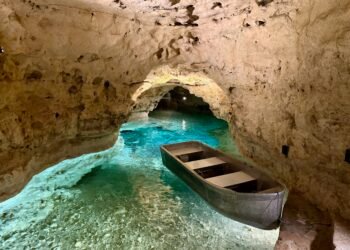During my first months living in the United Kingdom, one of the top places on my list to visit was the Natural History Museum in London. I’ve always been fascinated by the natural world, and this renowned museum promised an unforgettable journey through time. From the awe-inspiring skeleton of a blue whale that greets you in the Hintze Hall to the impressive fossil collection and dazzling array of minerals, I found myself immersed in a world of science and discovery. Each exhibit brought me closer to understanding the history of life on Earth and sparked a renewed curiosity for exploring the wonders of nature.
1 A New Adventure: The Natural History Museum London
November had just rolled in, marking the beginning of my new life in London, UK. As someone with a passion for the natural world, there was no question about where my first major adventure would take me – the renowned Natural History Museum London. This world-class institution, famous for its impressive collection spanning fossils, minerals, and ancient species, was high on my list of must-see places. It’s a place where science travelers, lifelong learners, and experience seekers alike come to marvel at the wonders of nature.
With my online ticket booked (admission is free, but a donation helps support the museum’s efforts), I made my way to this grand museum, choosing an entrance time as part of the booking. As I arrived, the grandeur of the building left me in awe. It felt almost royal, as though I was about to walk into one of the many stately homes of British aristocracy, yet this was a home to the natural world.

2 Quick Facts
- Location: Cromwell Road, South Kensington, London, UK
- Founded: 1881
- Collections: Over 80 million specimens across paleontology, zoology, botany, entomology, and mineralogy
- Iconic Exhibits:
- Hope the blue whale skeleton in Hintze Hall
- Dippy the famous Diplodocus (now replaced by Hope)
- Archaeopteryx fossil, plesiosaurs, and meteorites
- Annual Visitors: Approx. 5.7 million (2023)
- Admission: Free (donations encouraged)
- Opening Hours: Daily, 10:00 am – 5:50 pm (last entry 5:30 pm)
- Nearest Tube Stations: South Kensington, Gloucester Road
- Website: nhm.ac.uk
3 First Impressions: A Whale of a Welcome
Walking into Hintze Hall in the main building, I was immediately struck by the colossal blue whale skeleton hanging from the ceiling. Its sheer size was almost overwhelming – this enormous creature that once graced the oceans now suspended in time above a sea of visitors. I’d read about blue whales before, but seeing one up close was entirely different. It filled me with a sense of wonder and reverence. What would it have been like to witness such a creature in motion, gliding gracefully through the depths?
Blue whales, the largest animals to have ever lived, can reach lengths of up to 100 feet. Despite their enormous size, they feed primarily on tiny krill, a contrast that highlights the delicate balance of marine ecosystems. Sadly, these majestic creatures have faced near-extinction due to human activities, particularly whaling. The blue whale skeleton, named “Hope” as a symbol of humanity’s potential to save endangered species, stands as a powerful reminder of both the fragility of marine life and our responsibility to protect it.
Off to the side of Hintze Hall, other equally captivating displays caught my eye – dinosaur bones, ancient tree trunks, and an impressive American mastodon. I found myself standing in awe, surrounded by remnants of the Earth’s long-forgotten past, each exhibit offering a glimpse into a world that existed long before humanity’s footprint.

4 Dinosaur Bones and Ancient Giants
After marveling at the blue whale, my next stop was the main foyer’s other impressive exhibits. To my left, I was greeted by the towering skeletons of dinosaurs and other ancient giants that once roamed the Earth. The sheer size of these fossilized creatures was mind-boggling, their bones standing as silent witnesses to a world that existed millions of years before our time.
A massive American mastodon stood proudly among the exhibits. With its long, curved tusks and sturdy frame, it felt like a living piece of history, offering a glimpse into the Ice Age. I couldn’t help but imagine these creatures once roaming the Earth, their lives intertwined with the evolution of species that would eventually lead to us.

The scale of these fossils was a reminder of the incredible diversity of life that has existed on our planet. Each display, from the towering dinosaur bones to the ancient tree trunks frozen in time, offered a window into a past filled with creatures so large and majestic it was difficult to fully grasp the magnitude of it all.
5 Fossils: Windows into the Past
Eager to explore more, I headed straight for the fossils section. This was one of the areas I had been most excited to see, especially given my fascination with ancient marine creatures and their preserved remains. Walking through the galleries, I found myself surrounded by relics of life that existed millions of years ago, encased in stone as nature’s time capsules.
What amazed me was that many of these fossils came from the United Kingdom itself. I marveled at the detailed displays, learning that places like the Dorset and Somerset coastlines are some of the richest fossil beds in the world. Trilobites from Wales, sea urchins from Devon, and tube worms from Sussex lined the cases, each fossil a tiny snapshot of Earth’s distant past.

One fossil in particular stood out – a Pliosaur, an enormous marine reptile from the Jurassic period. It had been found near Kettleness, in Whitby, Yorkshire. Seeing it mounted on the wall, its imposing presence was almost intimidating, as if the creature might come back to life at any moment. I had read about these incredible creatures in magazines, but encountering one up close left me in awe of its size and power. This wasn’t just a relic; it was a reminder of the immense and terrifying world that once existed beneath the waves.
Nearby, the skeleton of an Ichthyosaur, another ancient marine reptile, caught my eye. With its sleek, dolphin-like body, it felt almost familiar, yet the sharp, reptilian features reminded me this was no mammal, it was a hunter of the Jurassic seas. These exhibits pulled me in, fueling my curiosity about the oceans that existed millions of years ago and the creatures that thrived within them.

6 Minerals and Crystals: Nature’s Artistry
After spending a long time with the fossils, I moved on to another part of the museum that had always piqued my interest – the rock and mineral section. This collection of Earth’s natural treasures dazzled with its sheer variety of colors and crystalline formations. I’ve always found minerals and crystals to be mesmerizing, like pieces of art crafted by nature itself. Although I’ve never been a collector, the beauty and complexity of these formations have always captivated me.
Walking through the exhibits, I found myself pausing at each display, studying the intricate shapes and vibrant hues. Minerals that sparkled with crystalline clarity caught my eye, with some stones looking like they had been dipped in a palette of colors, ranging from deep purples to brilliant greens and blues. I particularly admired a large specimen of amethyst, with its deep violet crystals protruding like shards of glass, illuminated under the soft lights of the display.
The science behind the formation of these minerals is equally fascinating. Many of the crystals on display had formed over millions of years, slowly developing their distinctive structures under intense pressure and heat deep within the Earth. The vibrant colors result from trace elements, copper, iron, and other metals, within the crystal lattice, turning these geological formations into stunning natural works of art.

7 Human Evolution: Meeting Our Ancestors
As I made my way through the museum, I stumbled upon a section that resonated with my university studies – a wall of humanoid skulls, reminding me of the anthropology course I had taken. It was like walking through a timeline of human evolution, each skull representing a distinct chapter in the story of Homo sapiens. From Homo erectus to Neanderthals and even the elusive Homo Antecessor, these were species that shared an ancient connection with us.
Standing there, gazing at the array of skulls mounted on the wall, I felt a strange sense of familiarity. I had studied many of these in university, and seeing them in person brought those lessons to life in an entirely new way. The Australopithecus Sediba skull particularly caught my attention. It was a reminder of how far we’ve come, yet how closely we are tied to these early ancestors. Each of these species had their own unique adaptations to their environments, and yet, in their faces, you could almost see the echoes of modern humanity.

The exhibit also gave me a profound appreciation for the incredible journey our species has taken. From upright walking to the development of tools and culture, the skulls in front of me represented millennia of evolution, progress, and survival. It was both humbling and awe-inspiring to consider how much we owe to these early humans and their ability to adapt in a world far harsher than ours today.
8 The Museum’s Legacy: A Home for Discovery
While exploring, I couldn’t help but reflect on the significance of the museum itself. The Natural History Museum was founded in 1881, and its collections have played an essential role in advancing our understanding of the natural world. Its architecture alone, with grand Romanesque design and intricate terracotta decorations, is a work of art that embodies the museum’s mission: to make knowledge of the natural world accessible to all.
Over the years, the museum has hosted groundbreaking discoveries in fields like paleontology, geology, and anthropology. In fact, it was in this very museum that Charles Darwin’s theories of evolution were showcased to the public, forever changing how we view life on Earth. For me, knowing that I was walking through a place where such monumental scientific progress had been made added a sense of reverence to the experience.
9 Practical Travel Tips: Making the Most of Your Visit
After spending a full day at the museum, I picked up a few tips that can help make your visit smooth and enjoyable:
- Book Your Tickets in Advance: While the museum is free, I highly recommend booking a timed entry slot online, especially if you’re visiting during peak tourist seasons. It saves time and guarantees you won’t be stuck in a long queue.
- Arrive Early: The museum opens at 10:00 AM, and arriving early not only helps you beat the crowd but gives you a chance to fully immerse yourself in the exhibits before the space becomes too busy.
- Plan Your Route: With so many sections to explore, it’s helpful to plan ahead. If there are specific exhibits you’re excited to see—like the dinosaur fossils or the minerals section—head to those first.
- Bring Snacks or Visit the Café: The museum has several cafés, but bringing a light snack or water can be handy, especially if you plan to spend several hours exploring.
- Explore Nearby Attractions: Located in South Kensington, the museum is near other iconic London attractions like the Victoria and Albert Museum and the Science Museum. Make it a day of cultural exploration if time allows.
10 Pro Tips for Science and Culture Enthusiasts
For those seeking a deeper connection with the museum’s exhibits and a more enriched experience, here are a few pro tips:
- Attend Special Exhibits and Talks: The Natural History Museum frequently hosts special exhibitions, science talks, and even behind-the-scenes tours. These events often dive deeper into specific themes like paleontology, climate science, or biodiversity – perfect for science travelers and lifelong learners. Check the museum’s website in advance for a schedule of these events.

- Focus on Fossils and Geology: If geology and paleontology fascinate you, spend extra time in the Earth Hall, where you’ll find incredible fossils and the jaw-dropping mineral collection. Don’t miss the impressive vault that holds the museum’s most precious gems.
- Study the Human Evolution Exhibits: For anthropology enthusiasts, the humanoid skulls and evolution exhibits are must-see. This section of the museum offers a unique glimpse into our ancient ancestors and the evolutionary processes that led to modern humans. Taking time to really study these displays can deepen your understanding of human history.
- Photography and Sketching: Bring a notebook or a camera to capture the details of your favorite exhibits. Whether it’s a sketch of a Pliosaur fossil or a photograph of a rare mineral, documenting your visit allows you to relive and study your experience long after you’ve left the museum.
- Visit During Special Evening Openings: On select evenings, the museum offers late-night openings. It’s a unique way to experience the exhibits in a quieter and more atmospheric setting, perfect for reflection and deeper exploration.
11 Personal Reflections: The Museum as a Gateway to Discovery
As I wandered through the various sections of the Natural History Museum, one thing became clear—this place was more than just a collection of artifacts. It was a gateway to understanding our planet and our place within it. From the massive skeletons that once swam in the oceans to the vibrant minerals formed deep within the Earth, each exhibit told a story of life, change, and discovery.
“The Natural History Museum isn’t just a collection of artifacts – it’s a gateway to understanding Earth’s past and our place within it.”
For me, the museum reignited my passion for science and exploration. It reminded me of the incredible diversity of life on Earth, the complexities of natural processes, and the interconnectedness of all living things. It also deepened my appreciation for the delicate balance of ecosystems and the importance of preserving our natural world for future generations. Reflecting on this, I found myself thinking about current global challenges – climate change, biodiversity loss, and habitat destruction. The museum, with its preserved pieces of Earth’s history, felt like a poignant reminder that what we do today will shape the world of tomorrow.
This visit wasn’t just about seeing fossils or gazing at minerals, it was about understanding the vastness of Earth’s history and realizing that we, as humans, are just a small part of a much larger narrative. It’s easy to forget that when caught up in the hustle of modern life, but places like the Natural History Museum London provide a necessary reminder of our shared history and the incredible forces that have shaped our world.
12 More Science Travel Adventures
If the wonders of the Natural History Museum London inspired you, explore these other unforgettable science travel destinations:










